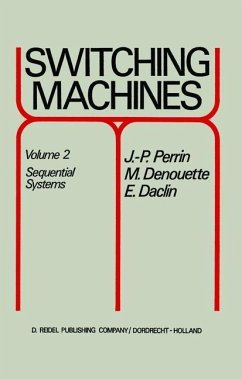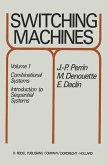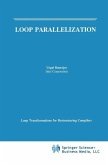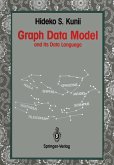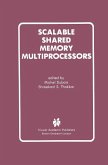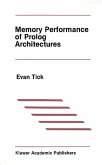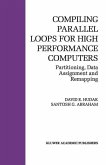113,95 €
113,95 €
inkl. MwSt.
Sofort per Download lieferbar

57 °P sammeln
113,95 €
Als Download kaufen

113,95 €
inkl. MwSt.
Sofort per Download lieferbar

57 °P sammeln
Jetzt verschenken
Alle Infos zum eBook verschenken
113,95 €
inkl. MwSt.
Sofort per Download lieferbar
Alle Infos zum eBook verschenken

57 °P sammeln
- Format: PDF
- Merkliste
- Auf die Merkliste
- Bewerten Bewerten
- Teilen
- Produkt teilen
- Produkterinnerung
- Produkterinnerung

Bitte loggen Sie sich zunächst in Ihr Kundenkonto ein oder registrieren Sie sich bei
bücher.de, um das eBook-Abo tolino select nutzen zu können.
Hier können Sie sich einloggen
Hier können Sie sich einloggen
Sie sind bereits eingeloggt. Klicken Sie auf 2. tolino select Abo, um fortzufahren.

Bitte loggen Sie sich zunächst in Ihr Kundenkonto ein oder registrieren Sie sich bei bücher.de, um das eBook-Abo tolino select nutzen zu können.
Zur Zeit liegt uns keine Inhaltsangabe vor.
- Geräte: PC
- ohne Kopierschutz
- eBook Hilfe
- Größe: 42.15MB
Andere Kunden interessierten sich auch für
![Switching Machines (eBook, PDF) Switching Machines (eBook, PDF)]() J. P. PerrinSwitching Machines (eBook, PDF)40,95 €
J. P. PerrinSwitching Machines (eBook, PDF)40,95 €![Assignment Problems in Parallel and Distributed Computing (eBook, PDF) Assignment Problems in Parallel and Distributed Computing (eBook, PDF)]() Shahid H. BokhariAssignment Problems in Parallel and Distributed Computing (eBook, PDF)73,95 €
Shahid H. BokhariAssignment Problems in Parallel and Distributed Computing (eBook, PDF)73,95 €![Loop Parallelization (eBook, PDF) Loop Parallelization (eBook, PDF)]() Utpal BanerjeeLoop Parallelization (eBook, PDF)113,95 €
Utpal BanerjeeLoop Parallelization (eBook, PDF)113,95 €![Graph Data Model (eBook, PDF) Graph Data Model (eBook, PDF)]() Hideko S. KuniiGraph Data Model (eBook, PDF)40,95 €
Hideko S. KuniiGraph Data Model (eBook, PDF)40,95 €![Scalable Shared Memory Multiprocessors (eBook, PDF) Scalable Shared Memory Multiprocessors (eBook, PDF)]() Scalable Shared Memory Multiprocessors (eBook, PDF)113,95 €
Scalable Shared Memory Multiprocessors (eBook, PDF)113,95 €![Memory Performance of Prolog Architectures (eBook, PDF) Memory Performance of Prolog Architectures (eBook, PDF)]() Evan TickMemory Performance of Prolog Architectures (eBook, PDF)113,95 €
Evan TickMemory Performance of Prolog Architectures (eBook, PDF)113,95 €![Compiling Parallel Loops for High Performance Computers (eBook, PDF) Compiling Parallel Loops for High Performance Computers (eBook, PDF)]() David E. HudakCompiling Parallel Loops for High Performance Computers (eBook, PDF)73,95 €
David E. HudakCompiling Parallel Loops for High Performance Computers (eBook, PDF)73,95 €-
-
-
Zur Zeit liegt uns keine Inhaltsangabe vor.
Dieser Download kann aus rechtlichen Gründen nur mit Rechnungsadresse in A, B, BG, CY, CZ, D, DK, EW, E, FIN, F, GR, HR, H, IRL, I, LT, L, LR, M, NL, PL, P, R, S, SLO, SK ausgeliefert werden.
Produktdetails
- Produktdetails
- Verlag: Springer Netherlands
- Seitenzahl: 421
- Erscheinungstermin: 6. Dezember 2012
- Englisch
- ISBN-13: 9789401028677
- Artikelnr.: 43984661
- Verlag: Springer Netherlands
- Seitenzahl: 421
- Erscheinungstermin: 6. Dezember 2012
- Englisch
- ISBN-13: 9789401028677
- Artikelnr.: 43984661
- Herstellerkennzeichnung Die Herstellerinformationen sind derzeit nicht verfügbar.
7/Synthesis of the Tables.- 7.1. Generalizations.- 7.2. Natural methods.- 7.3. Algebraic methods-Notion of a regular expression.- 7.4. Gloushkov method.- 7.5. Conclusion.- 7.A. Brzozowski method.- Exercises.- 8/Reduction of the Number of States in a Table.- 8.1. Introduction-Statement of the problem.- 8.2. Equivalence of states.- 8.3. Reduction of complete tables.- 8.4. Reduction of incomplete tables.- 8.5. Programming of flow table reduction on digital computers.- 8.6. Reduction of a phase table.- 8.7. Application of the method of compatible pairs to asynchronous systems.- 8.8. Conclusion.- Exercises.- 9/Assignment of the Internal States (Asynchronous Sequential Systems).- 9.1. Introduction.- 9.2. Connected sets.- 9.3. Huffman numbers.- 9.4. The influence of essential connections on the density of the assignment table.- 9.5. Reduction of the system's number of connections.- 9.6. Creation of supplementary unstable states.- 9.7. Incomplete merging of the primitive phase table.- 9.8. General remarks about assignment.- 9.9. Assignments and universal circuits.- Exercises.- 10/Assignment of Internal States (Synchronous Systems).- 10.1. Introduction.- 10.2. Distinct assignments-valid assignments.- 10.3. Example of the different assignments of a same table.- 10.4. Assignment from adjacency study.- 10.5. General concepts concerning partitions.- 10.6. Search for the p.s.p..- 10.7. Properties connected with partitions p.s.p..- 10.8. Use of the p.s.p. in assignment.- 10.9. Decomposition of sequential machines.- 10.10. Partition pairs.- 10.11. Assignment of the uncompletely specified tables.- 10.12. Extension methods.- 10.13. Assignment of internal states by taking into account the output.- 10.14. Conclusion.- Exercises.- 11/Examples of Applications.- 11.1. Introduction.- 11.2.Applications on computers.- 11.3. Sequentially controlled machines.- 11.4. Analysis of a system of electrical airplane generation.- Exercises.- 12/Linear Sequential Systems.- 12.1. Introduction.- 12.2. Review of algebra.- 12.3. Transition of linear sequential systems.- 12.4. General configurations of linear machines.- 12.5. Discrete Laplace transform.- 12.6. Study of linear systems by the discrete Laplace transform.- 12.7. Application.- 12.8. Conclusion.- Exercises.- 13/Theoretical Study of the Real Functioning of Binary Switching Elements-Non-Binary Switching Elements.- 13.1. Many-valued algebra.- 13.2. Ternary algebra and relay systems.- 13.3. Expression for a function defined in a set of p values.- 13.4. Characteristic equation of a relay.- 13.5. Analysis of relay systems.- 13.7. Multipositional contactors.- 13.8. Analysis of a multipositional contactor circuit ideal functioning.- 13.9. Minimization of the conductibility function of the commutators' circuits.- 13.10. Synthesis of relay circuits with ordinary contacts 400 13.10.1. Action of a switch A on a relay X.- 13.11. Lukasiewicz algebras and their applications.- 13.12. Conclusion.- Exercises.
7/Synthesis of the Tables.- 7.1. Generalizations.- 7.2. Natural methods.- 7.3. Algebraic methods-Notion of a regular expression.- 7.4. Gloushkov method.- 7.5. Conclusion.- 7.A. Brzozowski method.- Exercises.- 8/Reduction of the Number of States in a Table.- 8.1. Introduction-Statement of the problem.- 8.2. Equivalence of states.- 8.3. Reduction of complete tables.- 8.4. Reduction of incomplete tables.- 8.5. Programming of flow table reduction on digital computers.- 8.6. Reduction of a phase table.- 8.7. Application of the method of compatible pairs to asynchronous systems.- 8.8. Conclusion.- Exercises.- 9/Assignment of the Internal States (Asynchronous Sequential Systems).- 9.1. Introduction.- 9.2. Connected sets.- 9.3. Huffman numbers.- 9.4. The influence of essential connections on the density of the assignment table.- 9.5. Reduction of the system's number of connections.- 9.6. Creation of supplementary unstable states.- 9.7. Incomplete merging of the primitive phase table.- 9.8. General remarks about assignment.- 9.9. Assignments and universal circuits.- Exercises.- 10/Assignment of Internal States (Synchronous Systems).- 10.1. Introduction.- 10.2. Distinct assignments-valid assignments.- 10.3. Example of the different assignments of a same table.- 10.4. Assignment from adjacency study.- 10.5. General concepts concerning partitions.- 10.6. Search for the p.s.p..- 10.7. Properties connected with partitions p.s.p..- 10.8. Use of the p.s.p. in assignment.- 10.9. Decomposition of sequential machines.- 10.10. Partition pairs.- 10.11. Assignment of the uncompletely specified tables.- 10.12. Extension methods.- 10.13. Assignment of internal states by taking into account the output.- 10.14. Conclusion.- Exercises.- 11/Examples of Applications.- 11.1. Introduction.- 11.2.Applications on computers.- 11.3. Sequentially controlled machines.- 11.4. Analysis of a system of electrical airplane generation.- Exercises.- 12/Linear Sequential Systems.- 12.1. Introduction.- 12.2. Review of algebra.- 12.3. Transition of linear sequential systems.- 12.4. General configurations of linear machines.- 12.5. Discrete Laplace transform.- 12.6. Study of linear systems by the discrete Laplace transform.- 12.7. Application.- 12.8. Conclusion.- Exercises.- 13/Theoretical Study of the Real Functioning of Binary Switching Elements-Non-Binary Switching Elements.- 13.1. Many-valued algebra.- 13.2. Ternary algebra and relay systems.- 13.3. Expression for a function defined in a set of p values.- 13.4. Characteristic equation of a relay.- 13.5. Analysis of relay systems.- 13.7. Multipositional contactors.- 13.8. Analysis of a multipositional contactor circuit ideal functioning.- 13.9. Minimization of the conductibility function of the commutators' circuits.- 13.10. Synthesis of relay circuits with ordinary contacts 400 13.10.1. Action of a switch A on a relay X.- 13.11. Lukasiewicz algebras and their applications.- 13.12. Conclusion.- Exercises.
